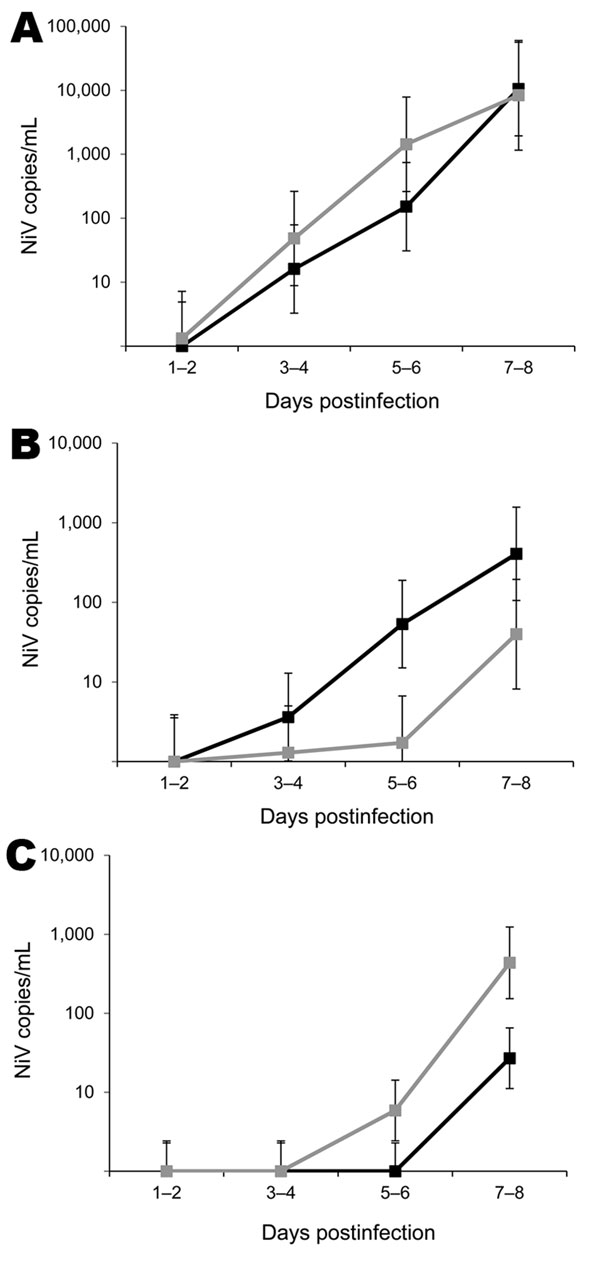Volume 18, Number 12—December 2012
Research
Transmission Routes for Nipah Virus from Malaysia and Bangladesh
Figure 1

Figure 1. . . Predicted means for detection of Nipah virus (NiV) RNA in nasal wash samples (A), oral swab samples (B,) and rectal swab samples (C) from experimentally infected ferrets over time, based on residual maximum-likelihood analysis. Black line, NiV-Bangladesh; gray line, NiV-Malaysia. NiV N gene copies per milliliter of sample were calculated from reverse transcription data, then the transformation log10(x1 + 780) was calculated, where x1 = NiV gene copies per milliliter. Values were fitted in the residual maximum-likelihood model by using transformed data and are plotted as values relative to the original scale (y-axis; logarithmic scale). Error bars represent approximate upper and lower limits for 95% CIs for the mean (calculated as mean ± 2 SE relative to the transformed scale).